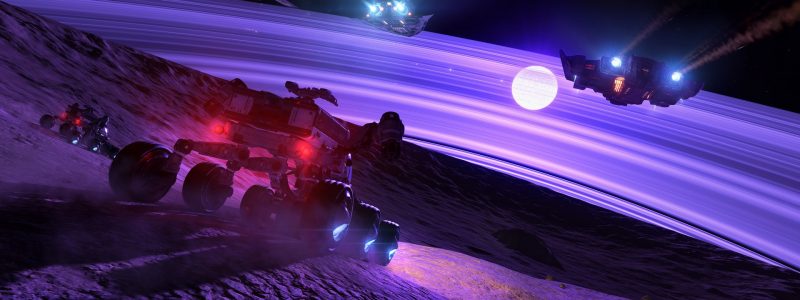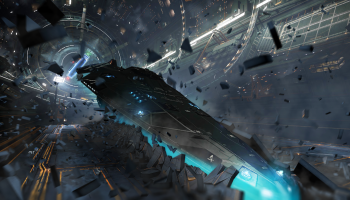Hi all,
I've noticed that quite a few people are starting to get into exobiology now that it has become a (very) viable source of income.
So, since I've been doing it for a while now, I wanted to share a few of the things I've figured out so that you don't have to.
If you're an experienced exobiologist, well, all this is probably redundant to you.
Also, this is a bunch of tips to avoid wasting your time. If you do exobiology just for the vistas, then this is pointless for you as well, just keep enjoying what you're doing:)
So, in no particular order:
If you want to have fun discovering things but you also want to make some cash out of it, you have to start optimising the time you spend doing it.
By this I mean: stop flying to planets that are likely full of worthless crap you've already logged and look for planets that hold the good stuff! I'll get to that later.Star types can be disregarded in the search for good signals. You can filter your route to the usual OBAFGKM, or even better just do OBAF and add Neutron Stars to it. When NS do have landable planets, they tend to be really good.
.
What I do is disregard all species below 5mil, but obviously do as you like. I might raise the bar later on, at the moment it works for me. So, if a planet is likely to have two bio signals that are almost guaranteed to be below 5 mil each I just move on. The amount time I save by avoiding the worthless stuff will be used for more valuable bodies.the most valuable species you can find is Stratum Tectonicas, which rewards more than 19mil.
Stratum Tectonicas are most likely found in planets with a Sulphur Dioxide Atmosphere. If you see a planet with Sulphur Dioxide atmosphere then rejoyce! But check other things first before you fly there (more on this later).
Stratum Tectonicas can also be found in planets with Ammonia Atmosphere and Carbon Dioxide with more than 1 signal, AS LONG AS their composition has at least 30% metal. Even Sulphur Dioxide planets with less than 30% metal will not have Stratum Tectonicas. There will be a Stratum, but it will be a Stratum Araneamus (less than 2.5mil).
The most common bodies you'll find in space will be Carbon Dioxide or Ammonia.
bacteria can be almost always ignored, they're worthless unless they are on the "expensive" planets (more of this later).
If a planet has just one signal, it's a bacterium 10 times out of 10, just fly along.If Ammonia, CO2 or Sulphur Dioxide have 2 signals, those will be 1 worthless bacterium and a Stratum.
If the metal in the crust is below 30% it's a worthless Stratum Paleas and you should ignore it, if it's above, then it's likely a Stratum Tectonicas.If a CO2 planets has a lot of signals (4-7), but metal below 30% it can be ignored.
If an Ammonia planet has lots of signals (above 5) but metal below 30% , fly there anyway and scan it from orbit, regardless of the amount of metal. If there's a Frutexa in the list of signals then you can fly to the surface and look for Frutexa Flammatis. If it is, then log it, it's valuable. If it isn't then avoid landing and fly to the next.
Argon planets with 2 signals are worthless, always, UNLESS they are in a Neutron Star system. If it's not a NS then you can always ignore Argon planets.
Same with Neon or Methane planets with 2 signals, unless sometimes metal is above 30%. In my experience Methane tends to be shit 99% of the times, I scan them only if they have lots of signals.
most of the species are found everywhere, while some of them are specific to an area.
You'll notice patterns after you've scanned for a bit in a new area. Just spend some time to learn these patterns! For example, let's say you come from an area where you kept finding lots of CO2 planets with 4 signals (common pattern).
You land there a bunch of times and after the nth time you figure that they consistently have a worthless combination of: 1 Bacterium Alcioneum, 1 Stratum Paleas, 1 Tussock Propagito, 1 Frutexa Fera, all below 1 mil each.
Then you cross the border to the Orion-Cygnus Arm, you get the same bunch of CO2 planets with 4 signals but look! Instead of a Frutexa Fera you now have all Frutexa Acus, which is almost 8mil each.just to drive the point across once again: a part from some exceptions, you'll find species in a given order, which depends on the number of signals in a planet.
So, let's take a CO2 planet as an example.
If it has 1 signal it will always be a Bacterium (this is true for literally all planets).
If there are 2 signals, then it will be a Bacterium and a Stratum. If it's 3 it will be Bacterium, Stratum, Tussock. If it's 4 it will be Bacterium, Stratum, Tussock, Osseus etc.
So, if you've scanned a bunch of planets with 6 signals and you've found always the same pattern (Bacterium, Stratum, Tussock, Osseus, Concha, Frutexa), then you can safely assume that all CO2 planets in the region with 6 signals will be like that.
You find a planet with the same atmosphere but 8 signals? Great! The first 6 will be the same, but 2 of them will be new so you can fly there and scan.never not land in Oxygen, Water or Nitrogen planets. Even the Bacteria are quite rare there, if you see those planets land and scan all the things!
random tip: just forget about your SRV, unless driving really, really gives you pleasure. It's infinitely faster to just land over the target, disembark, scan, take off and land again than going around in your SRV.
ALWAYS GIVE 4 PIPS TO SHIELDS when you're flying nose down close to the ground! It's obvious but I almost crashed a couple of times because I was distracted. With all shields up you'll minimize the chances of losing all your data.
Source: https://www.reddit.com/r/EliteDangerous/comments/103z6pn/some_tips_about_exobiology/







